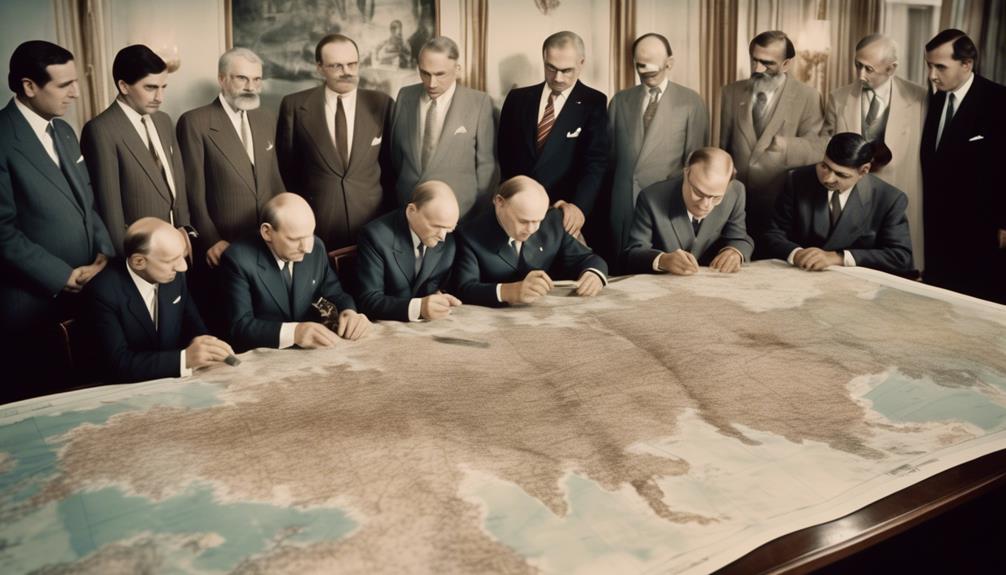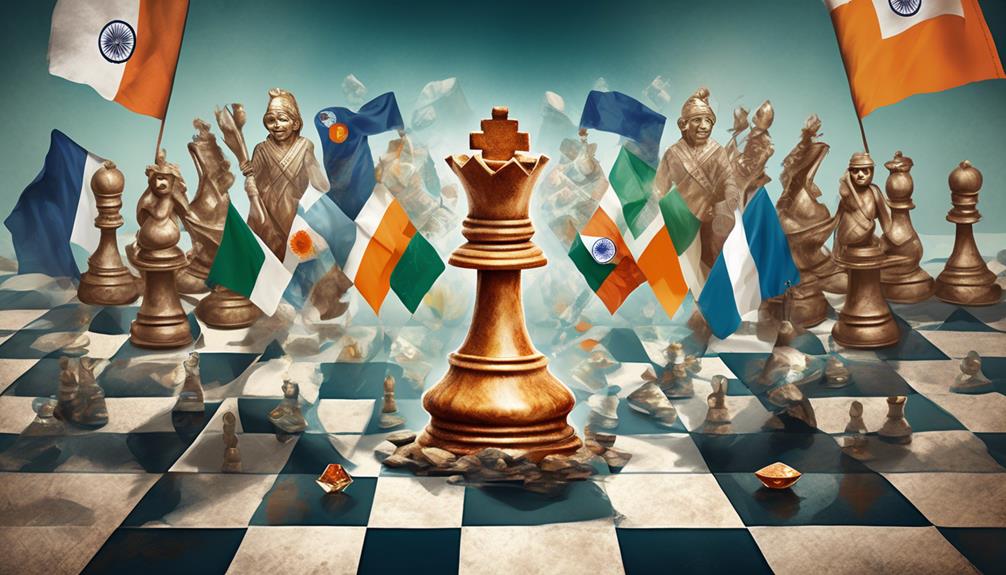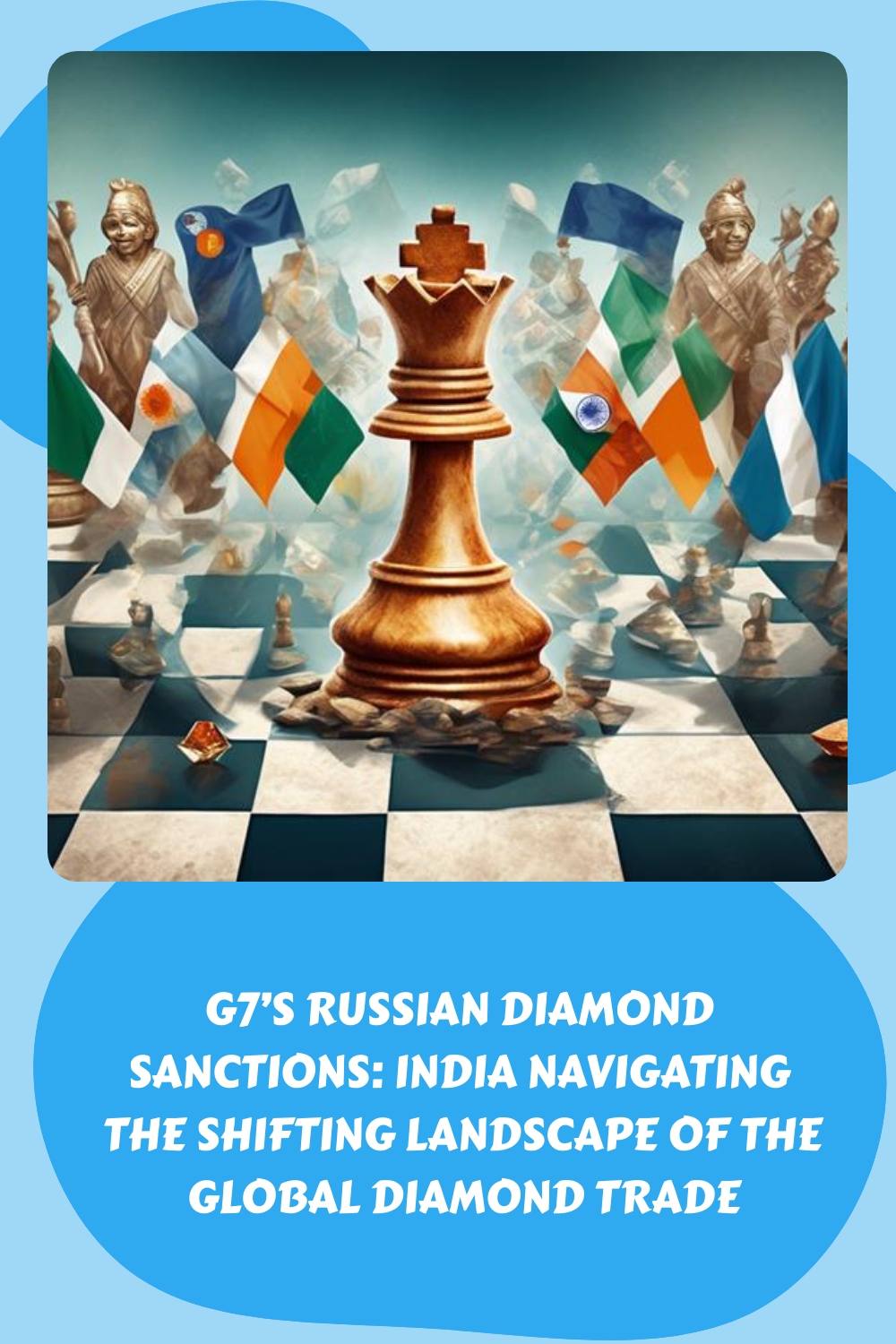Article Contents
- 1 Key Takeaways About The Russian Diamond Sanctions
- 2 What are the new restrictions imposed by the G7 on Russian diamonds?
- 3 India’s Role in the Global Diamond Industry
- 4 What are the concerns raised by the Indian diamond industry?
- 5 Global Perspectives and the Antwerp Factor
- 6 How Will These Restrictions Affect the Global Diamond Industry?
- 7 Will There be a Mechanism For Verifying the Origin of Diamonds?
- 8 Frequently Asked Questions
- 8.1 How Do the G7 Russian Diamond Sanctions Impact the Livelihood of Individual Diamond Workers and Small-Scale Traders in India?
- 8.2 Are There Any Environmental or Sustainability Considerations Being Taken Into Account by the G7 Countries When Imposing These Restrictions?
- 8.3 What Alternative Sources of Rough Diamonds Are Indian Diamond Traders Exploring to Mitigate the Impact of the G7 Restrictions?
- 8.4 How Might These Restrictions Influence the Research and Development of Lab-Grown Diamonds as an Alternative Within India?
- 8.5 What Are the Legal Implications for Indian Traders Found to Be in Violation of the G7’s Russian Diamond Sanctions, and How Is the Indian Government Responding?
- 9 How Does India’s Request for Time to Implement Import Restrictions Align with G7’s Russian Diamond Sanctions?
- 10 Conclusion
In the intricate web of international trade, the recent imposition of Russian diamond sanctions by the G7 has sent ripples across the globe, with significant implications for major players in the diamond industry.
At the heart of these unfolding events is India, a country whose prowess in diamond cutting and trading is unmatched. The new sanctions present both a challenge and an opportunity for the Indian diamond sector, which must now navigate the complexities of compliance while seeking to maintain its pivotal position in the global market.
As industry leaders weigh the potential impact on supply chains and the ethical considerations surrounding the origin of diamonds, the world watches closely. The question now arises: How will India adapt to these changes, and what will be the broader consequences for the international diamond trade? As lab diamonds gaining popularity, India will likely need to shift its focus from traditional diamond manufacturing to embrace the production of lab-grown diamonds. This shift could have profound effects on India’s economy and the thousands of workers currently employed in the country’s diamond industry. Additionally, the international diamond trade may see a significant shift in the coming years, as consumers increasingly prioritize ethical and sustainable practices in the jewelry they purchase.
This discourse aims to unravel the layers of this evolving situation, examining the multifaceted responses from a nation at the fulcrum of a changing industry.
Key Takeaways About The Russian Diamond Sanctions
- The G7 nations have imposed trade restrictions on Russian diamonds to curtail the Kremlin’s revenue streams, challenging the global market to adapt.
- India is concerned about the impact of these restrictions and is exploring alternative markets and advocating for policy adaptation to support its diamond industry.
- Small and marginal diamond units in India face amplified risks due to the shifting landscape, including a severe crunch in diamond liquidity and a restricted flow of raw materials.
- The Antwerp diamond market is crucial to international trade, influencing both global diamond supply and demand, and the market’s historical propensity for diamond smuggling has an impact on India’s anti-smuggling measures.
What are the new restrictions imposed by the G7 on Russian diamonds?
The Group of Seven (G7) nations recently imposed new restrictions on the import of Russian diamonds in response to the ongoing geopolitical tensions, in particular the Russian Special Military Operation in Ukraine. These restrictions aim to target a key export for Russia and are part of a broader strategy to economically isolate Moscow due to its actions on the international stage.
It is critical to examine whether these sanctions are comprehensive, encompassing all diamond categories, or if certain types of diamonds remain exempt from the ban.
Does the ban include all types of diamonds?
Imposing a new set of restrictions, the G7 countries have targeted the Russian diamond trade by specifically banning the import of rough diamonds, leaving polished diamonds currently exempt from these measures. This differentiation between diamond types reveals a complex landscape that stakeholders must navigate, reflecting on:
– Russian diamond sanctions
– Trade loopholes: The exemption of polished diamonds may create avenues for circumvention.
– Certification challenges: Ensuring the traceability of diamonds to prevent sanctioned rough diamonds from entering the market under the guise of polished stones.
– Diamond differentiation
– Market adaptation: India and other key players are assessing the impacts of restrictions and adjusting their sourcing and processing practices.
– Supply chain scrutiny: Increased due diligence is necessary to maintain the integrity of the global diamond supply chain.
India’s Role in the Global Diamond Industry
As the world’s premier diamond cutting and polishing hub, India plays a pivotal role in the global diamond industry, influencing both market dynamics and international trade patterns. The city of Surat, in particular, is renowned for its expertise in transforming rough diamonds into exquisitely polished gems. This proficiency contributes significantly to India’s economy through jewellery exports and establishes the country as a crucial intermediary in the supply chains of luxury goods worldwide.
The Indian diamond industry has shown a remarkable capacity for market adaptation, embracing technological advancements and responding to shifts in consumer preferences. For instance, it has been at the forefront of integrating synthetic alternatives into its product offerings, catering to a growing demographic seeking ethically sourced and cost-effective options.
This adaptability ensures that India remains competitive and continues to thrive amidst the challenges posed by global economic fluctuations and evolving market trends.
What are the concerns raised by the Indian diamond industry?

As India continues to fortify its position in the global diamond trade, the industry articulates concerns that revolve around the need for greater flexibility in trade policies and practices.
The stringent regulatory environment and volatility in international markets pose significant challenges, particularly impacting small and marginal diamond units that form the backbone of the sector.
Addressing these concerns is critical to ensuring India’s diamond industry’s sustained growth and competitiveness on the global stage.
India’s concerns and calls for flexibility
The Indian diamond industry has voiced concerns over stringent global trade regulations, which they believe could stifle their market flexibility and competitive edge. Faced with the G7’s Russian diamond sanctions, industry leaders are evaluating the potential trade repercussions, shifts in supply and demand dynamics, rising costs due to alternative sourcing, policy adaptations, the necessity for revised domestic policies to support trade, and engagement in economic diplomacy to negotiate more favourable terms.
The industry’s plea for flexibility is rooted in concerns about market resilience, capacity to absorb and adapt to market disruptions, consumer impact, potential price increases for end consumers, and ensuring continued access to a variety of diamond products.
Analyzing the situation, India’s diamond trade seeks a balance between compliance and sustaining its pivotal role in the global market.
Impact on small and marginal diamond units
Acknowledging the broader concerns of market flexibility, small and marginal diamond units within India’s industry face distinct challenges that compound the impact of global trade restrictions. These constraints are particularly pronounced when considering diamond layoffs and price fluctuations, which disproportionately affect less resilient and smaller-scale operations. Artisanal miners, often reliant on these units for their livelihood, are also vulnerable to the domino effect of market volatility and export decline.
| Concern | Impact on Small Units |
|---|---|
| Diamond layoffs | Reduced workforce stability |
| Market volatility | Unpredictable revenue |
| Export decline | Lowered international sales |
An analytical look at this situation reveals a sector under pressure from global trade dynamics and in need of adaptable strategies to maintain operations in the face of shifting economic conditions.
Global Perspectives and the Antwerp Factor

Belgium, particularly Antwerp, has long been revered as a global hub for diamond trading, impacting the international market dynamics significantly. The city’s strategic position in the diamond trade provides a barometer for the health of the global diamond industry, reflecting shifts in economic, political, and consumer trends.
Understanding Antwerp’s role is crucial for analyzing how India can optimize its participation in the global diamond market.
What is the role of Belgium in this context?
Amidst the intricate web of the global diamond trade, Belgium, and specifically the city of Antwerp, has long established itself as a pivotal player in both the rough and polished diamond markets. Belgium’s diamond logistics and trade diplomacy expertise has positioned Antwerp as a venerable hub with a legacy that has shaped the industry’s standards.
The city boasts a concentration of cutting centres renowned for their quality and craftsmanship, which are critical for transforming rough diamonds into marketable gems. Antwerp’s robust trade infrastructure includes an extensive diamond exchange network and shipping and handling facilities.
This operational prowess underscores Belgium’s role as a crucial intermediary, facilitating transactions and setting precedents in global diamond commerce. Consequently, any policy or market dynamics shifts, like the G7’s restrictions, reverberate through Antwerp’s trade arteries, impacting the worldwide flow of diamonds.
How Will These Restrictions Affect the Global Diamond Industry?

The imposition of trade restrictions by India, a key player in the global diamond market, is anticipated to create significant ripples throughout the industry, affecting supply chains, pricing, and international trade relations. As India is a prominent diamond-cutting and polishing hub, these restrictions may lead to trade repercussions that could extend beyond the immediate stakeholders, instigating market volatility. Supply adjustments are likely to be necessary as manufacturers and retailers seek alternative sources, while price fluctuations may arise due to changes in the perceived availability of diamonds.
The consumer response to these dynamics will be pivotal, potentially reshaping demand patterns. Those within the industry must remain vigilant, monitoring the situation to adapt their strategies accordingly. The following table presents a summary of potential impacts:
| Impact Area | Possible Outcome |
|---|---|
| Supply Chain Adjustments | Redistribution of diamond sources and partnerships |
| Pricing Dynamics | Increased prices due to supply scarcity |
| International Trade | Shifts in trade flow and alliances |
| Consumer Market Reactions | Changes in purchasing behavior and preferences |
An analytical approach to understanding these outcomes is essential for stakeholders looking to navigate the shifting landscape of the global diamond trade effectively.
Will There be a Mechanism For Verifying the Origin of Diamonds?

In light of these anticipated market shifts, establishing a reliable mechanism for verifying the origin of diamonds becomes increasingly critical for maintaining transparency and consumer trust. The global diamond market faces increased scrutiny, and a robust verification framework is essential for ethical sourcing compliance and consumer assurance. Understanding ethical diamond sourcing is integral to building a sustainable and responsible industry. By implementing a reliable verification mechanism, industry players can demonstrate their commitment to ethical practices and differentiate themselves as trusted suppliers in the market. Additionally, transparent sourcing processes help educate consumers on the importance of supporting ethical practices and drive demand for responsibly sourced diamonds.
- Diamond tracing technology
- Advanced spectroscopy and laser inscription to identify and track diamonds from mine to market.
- Geographic origin databases that match atomic structures to specific mines.
- Blockchain tracking potential
- Immutable ledger systems ensuring the provenance of diamonds through each step of the supply chain.
- Partnership opportunities between technology firms and diamond industry stakeholders to enhance traceability.
Amidst the effectiveness of the Kimberley Process, which aims to prevent the trade in conflict diamonds, there are calls for more stringent measures that account for diamonds potentially entering the market from sanctioned entities. Integrating blockchain technology offers a decentralized and transparent record, potentially improving current practices. Meanwhile, the rise of synthetic diamonds presents an alternative that inherently guarantees conflict-free status, aligning with consumer trends favouring ethical and sustainable products.
An effective verification mechanism is thus not only a tool for compliance but also a competitive differentiator in a market increasingly concerned with the ethical implications of diamond sourcing.

Frequently Asked Questions
How Do the G7 Russian Diamond Sanctions Impact the Livelihood of Individual Diamond Workers and Small-Scale Traders in India?
The G7 restrictions may increase diamond smuggling and market volatility, prompting worker migration from artisanal mining. This tests community resilience and impacts the livelihoods of small-scale traders and individual diamond workers in India.
Are There Any Environmental or Sustainability Considerations Being Taken Into Account by the G7 Countries When Imposing These Restrictions?
The G7 countries consider environmental factors like carbon footprint, ethical sourcing, biodiversity loss, water pollution, and renewable energy adoption in imposing trade restrictions to promote responsible and sustainable industry practices globally.
What Alternative Sources of Rough Diamonds Are Indian Diamond Traders Exploring to Mitigate the Impact of the G7 Restrictions?
Indian diamond traders are exploring Botswana partnerships, African explorations, Canadian imports, Australian ventures, and Antwerp negotiations to diversify sourcing and mitigate the impact of recent trade restrictions on their industry.
How Might These Restrictions Influence the Research and Development of Lab-Grown Diamonds as an Alternative Within India?
The restrictions may serve as a catalyst, sparking increased investment in lab-grown diamond technology. Fostering technology transfer, they could enhance market competition and consumer acceptance while navigating the ethical dimensions of synthetic diamonds.
What Are the Legal Implications for Indian Traders Found to Be in Violation of the G7’s Russian Diamond Sanctions, and How Is the Indian Government Responding?
Indian traders violating trade sanctions face legal consequences, prompting the government to address compliance challenges with enforcement strategies and balancing diplomatic relations while navigating the global regulatory environment.
How Does India’s Request for Time to Implement Import Restrictions Align with G7’s Russian Diamond Sanctions?
India’s request for additional time in implementing import restrictions demonstrates the delicate balance it seeks in global trade dynamics, particularly amid G7’s sanctions on Russian diamonds. By ensuring economic stability and safeguarding its jewelry industry, india delays russian diamond import restrictions to manage geopolitical and domestic priorities pragmatically while negotiating global partnerships.
Conclusion
The G7’s stringent measures on Russian diamonds introduce a glittering conundrum, casting a shadow on the sparkling prospects of the global diamond trade.
India’s pivotal role comes under the microscope, with the industry’s concerns reflecting the multifaceted challenges ahead.
The global stage, with Antwerp’s lustre dimming, must now adapt as the quest for a foolproof verification mechanism becomes akin to finding a needle in a haystack of gemstones.



